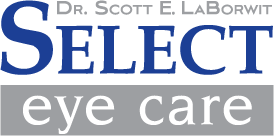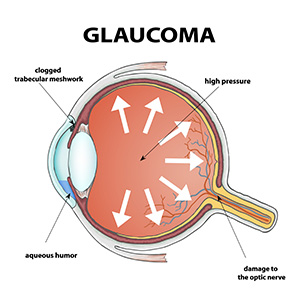A routine eye exam is the best way to protect yourself from glaucoma because symptoms usually do not appear until vision has been affected. An early diagnosis can help stop the progression of this eye condition and there are treatments available.
For many years drop therapy and invasive surgical intervention (trabeculectomy) were the only forms of treatment a patient was offered after being diagnosed with glaucoma. Today, the physicians at Select Eye Care make the most of breakthrough technology to give patients better, safer treatment options.
Discover the advancements in treatment that Select Eye Care can offer:
YAG Peripheral Iridotomies (PI)
A YAG laser Peripheral Iridotomy is a laser treatment for patients with narrow angle glaucoma or acute angle closure glaucoma. This procedure involves creating a small hole in the iris that allows fluid to drain from behind the iris to the front of the eye in turn, lowering the pressure in the eye. This is a quick procedure that usually takes 5-10 minutes and can save a patient’s vision. Complications from this procedure are uncommon but your vision may be blurry for a few hours following the procedure. It is best to have someone drive you home after. If you have glaucoma or if you are at risk for glaucoma, it is important to see your optometrist or ophthalmologist regularly to check for any eye changes and to talk through Glaucoma treatments that are best for you.
Minimally Invasive Glaucoma Surgery (MIGS)
Minimally Invasive Glaucoma Surgery (MIGS) is a type of surgical intervention that is used to treat glaucoma by reducing the intraocular pressure (IOP) within the eye. MIGS surgery is performed inside the eye using tiny incisions and microscopic tools and implants that are designed to carefully navigate the delicate tissues of the eye. MIGS devices work by enhancing the natural anatomy of the eye so outflow mechanisms can properly function. Typically, MIGS is recommended when eye drops, or laser procedures fail to control a patients IOP in patients with mild to moderate glaucoma. The recovery and downtime following a MIGS procedure is minimal, allowing patients to resume normal activities faster. At Select Eye Care, our doctors use a combination of phacoemulsification with MIGS to have the best possible outcomes for our patients. If you have glaucoma and think you may be a candidate for MIGS, we encourage you to speak with your ophthalmologist to see which Glaucoma treatment is best for you.
View Video




 There are two types of glaucoma:
There are two types of glaucoma: